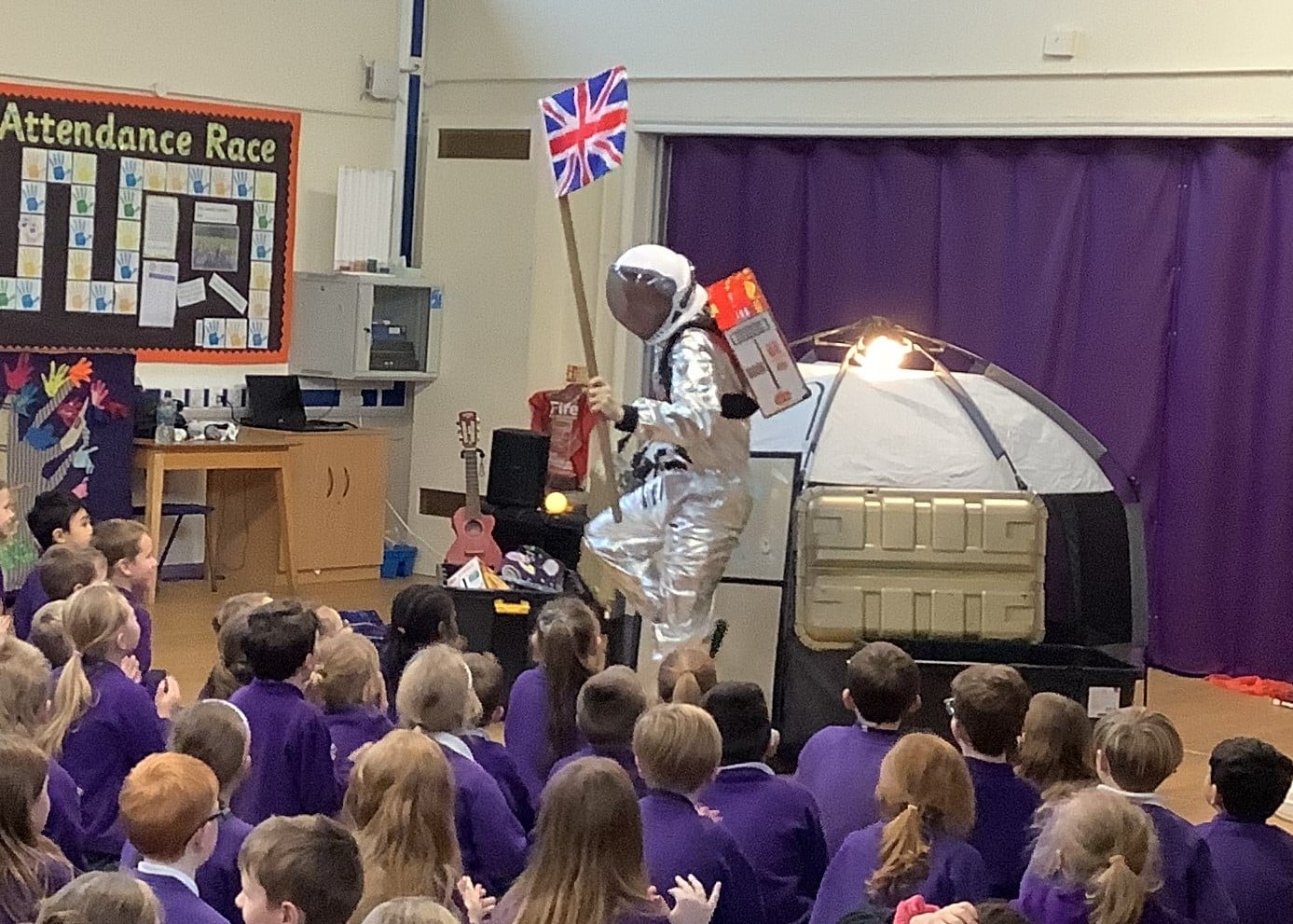Britain’s Got Talent star and Panto legend Ben Langley, got in touch with Jenni, our Programme Manager to scope out ideas for a possible collaboration and a science-themed theatre production was born!
We set about developing a plan, applying for funding and finding venues that might like to host the play. We were delighted to receive funding from the People’s Postcode Lottery to get the project off the ground and to link with the team at the Norwich Science Festival to give us the perfect place to perform the play!
We caught up with Ben to find out how he found working with us and to ask him our Top Three Questions.
Hi Ben! Can you tell us why you wanted to work with SAW and what you wanted to do?

Sure. I wanted to build a relationship and hopefully create more science-based theatre for young children in the future.
What topic did you focus on?
I have written a very exciting script about a boy who decides to fly to the moon. The play is called “To The Moon and Back! – it incorporates lots of ‘easy to digest’ space science information for young people.
Where have you performed the play so far?
With the help of SAW, I’ve just finished taking it on tour for free to over 30 schools reaching around 7000 children, as well as performing it for a week to families at The Norwich Science Festival.
That’s incredible! We’ve certainly loved working with you and are excited about what other science topics we could work on together to make science theatre a regular feature of our annual calendar!
SAW’s Top Three Questions
- What is your favourite piece of poetry at the moment, and why?
Not really a poem but recently I was talking to a colleague about busy schedules and the hardships of being on the road and away from home, and I was reminded of a famous speech given by Theodore Roosevelt entitled The Man in the Arena. It highlights the importance of perseverance, regardless of the outcome and the ongoing effort of this.
- What is your favourite piece of artwork at the moment, and why?
Claire De Lune by Marc Chagall – it depicts a couple of cheating lovers hiding behind a door in an embrace. The guy has a green face, so I assume jealousy is involved; in the distance there is another couple lying on a roof holding hands and looking up at the stars. I’ve always understood this as: in life there are two types of relationships: complicated ones and easy ones and to appreciate the heavens often gives one perspective and clarity.
- Can you tell us your most interesting scientific fact?
From Neil De Grasse Tyson: “There are more stars in the universe than grains of sand on any beach. More stars than seconds have passed since Earth formed. More stars than words and sounds ever uttered by all the humans who ever lived!”
Something I’ve always remembered from childhood is that it takes 8 minutes for the sun’s light to reach us which despite its size is incredible. The light we see tonight from Betelgeuse (the orangey glory star of Orion) has taken 700 years to reach our eyes, meaning it set off in the days of castles and knights. “Time” is probably another scientific theme I’d like to tackle in a play.

